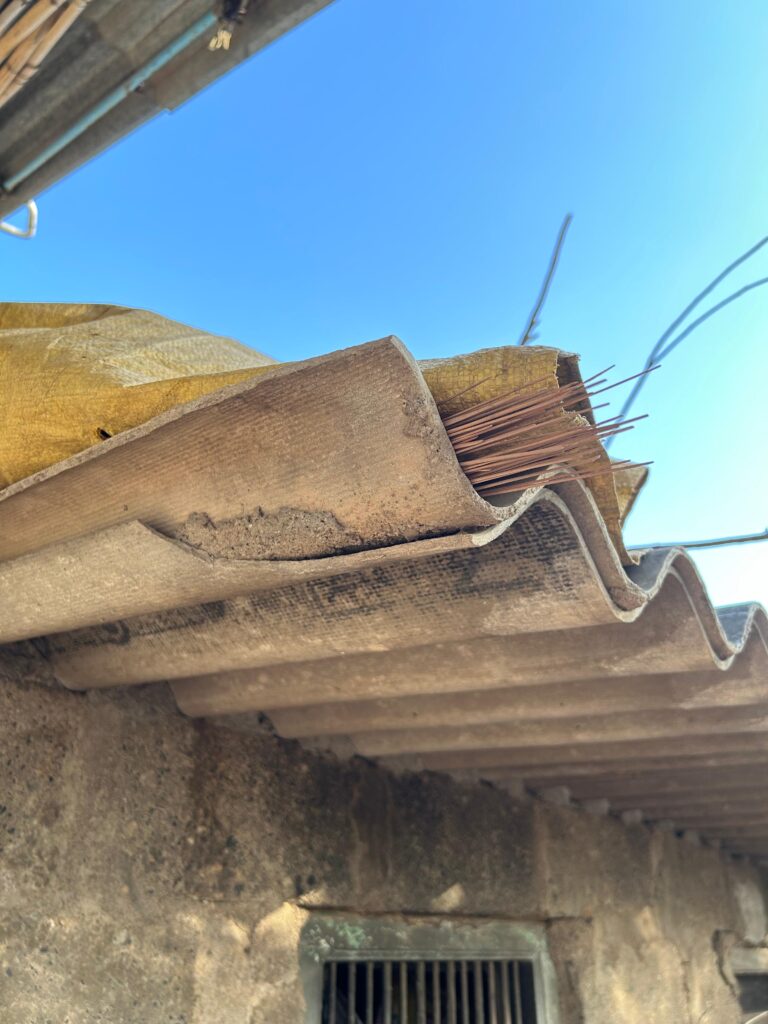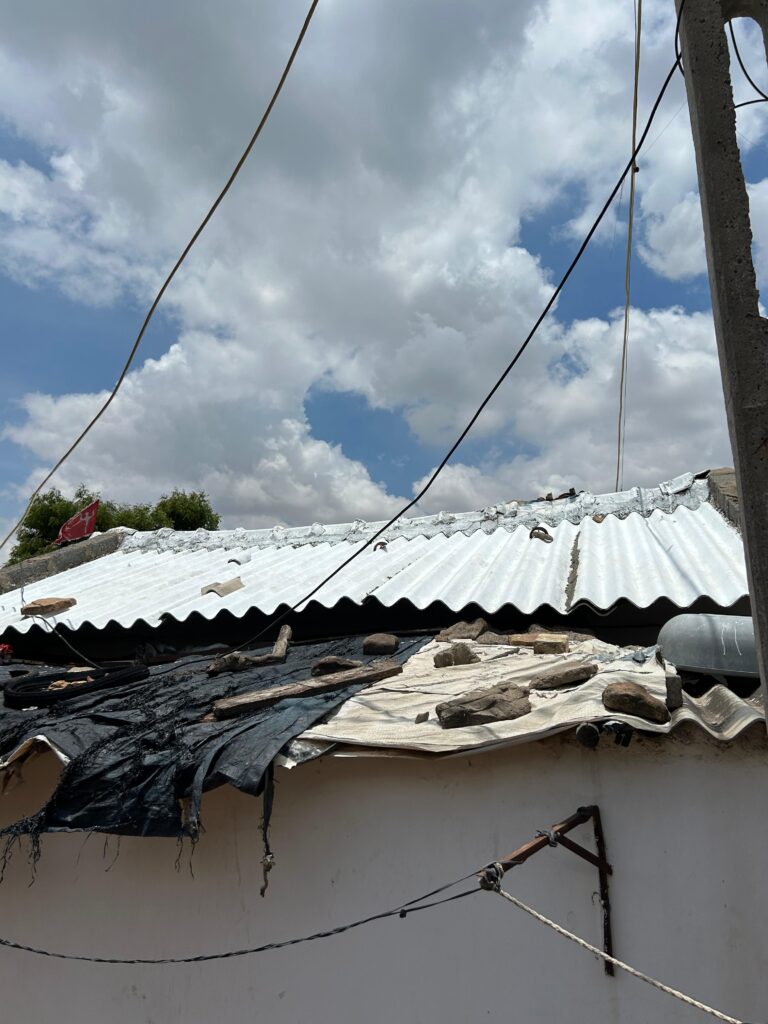It would be an understatement to say that this summer was harsh. As temperature almost touched 50 degrees in the capital; Bhuj in Kuchchh saw an average of 40-42 degrees. Homes are meant to bring respite from the heat. But what if your home turns into a heat-trapping container? In such a case, you can neither be safe from heat stress outside nor inside.
Heat-related illness impacted more 40,000 people in India, from March to June, while heat stroke claimed the lives of 110 people. Most news on the heat wave in India focus on the response of the healthcare system. There is not much focus on how our housing infrastructure is making it worse. Concrete is the bedrock on which all urban housing infrastructure is build. It not only absorbs heat during the day but also traps it in for the night, making it an impossible living condition inside. Similarly roofs made of concrete for low-income households that cannot afford an air-conditioner to cool their house, that concrete structure becomes a furnace. Unsustainable construction material dominates the market today for its mass production value and affordability.
Why Are Houses Heating Up?
The topic of heat dominated conversations at my workplace this summer. I would often hear about patra houses in these discussions and how those houses tend to heat up more than usual. Patra loosely translates to metal and in this context patra houses are houses with metal sheet roofs. Or so I thought. During field visits I took notice of these roofs but it did not look very metal-like to me. I noticed that it had a coarse/sandy texture, rather than a sharp and sleek one like a metal.
This peaked my curiosity and asked my father about these kinds of roofs. He explained that mainly there are two types of sheet roofs: Asbestos Cement (AC) and Galvanised Iron (GI). Between the two, AC sheets are more widespread due to its durability, lesser weight, heat resistance and non-corrosive properties. Sheet roof are a viable option for low-income households due to their low cost and low maintenance.
Asbestos Cement Roofs And Its Perils
True to what I had heard, the conditions inside AC roof houses were intense. I was able to experience it first hand during an SHG meeting in the middle of May. I had accompanied a colleague to her SHG bachat meeting in one of our slum areas. The house had a small veranda followed by the main house. We sat in their small living room, with only the main door for ventilation. It was 4:30 PM, the walls and the roof of the room were radiating intense heat. The floors caused the skin of my feet to burn. The fan was of no use and the heat was causing suffocation. After an hour or so I could no longer bear it. I moved and sat closer to the main door for airflow.

A significant portion of Bhuj’s slum population lives under AC roofs. The popularity of this material due to its low cost has shadowed its unsustainable characteristics – scorching sunlight
AC roofing functions as an insulator during winters, preventing the heat from escaping and keeping the inside warm. During summers, however, it begins to trap heat making it unbearable inside. Moreover, Asbestos, a silicate mineral, has been banned across the world as it leads to respiratory diseases.
(Read more about why India still uses Asbestos and respiratory diseases caused when it is inhaled).
Homes In The City
Most slum dwellings have AC roofs installed and as temperatures continue to break records every year, a significant population faces health risk. A cost-effective solution available is the solar reflective paint. In Bhuj, a project by Homes In The City (HIC) focusing on building climate change resilience among vulnerable communities is working to provide this paint to households. Purna Joshi, the project in-charge, detailed the aim of the project: spread awareness about climate change among low-income families, its effects on humans and offer solutions that help develop resilience.
Kitchen garden, Nirdham Chula or smokeless chula and reflective paint on roofs are three solutions at the core of this project. “These solutions revolve around bringing relief to women’s health issues exacerbated by climate changed caused-heat”, she explained. Each solutions helps mitigate heat at a household level as well as encourage economically sustainable habits in women.
Lived Experiences
As I was eager to experience the result of the reflective paint, I accompanied Purnaben to the field. She took me to meet with two women, Jashoda and Jayshree, who had gotten their roofs painted with the help of Homes in the City. Both recalled attending an area-wide meeting organised by Purnaben to inform them about the availability of a paint that would reduce the heat inside their homes.
Jashodaben, who lives with 14 other family members in a small 2 room house, was quite satisfied with the result of the paint. She told me it had been 20 days since her roof was painted and the change was noticeable. Prior to the paint, being inside in the afternoons was unbearable. She and her son had developed heat rashes throughout the summer. The paint brought about much needed relief from the heat.
Similar was the story at Jayshreeben’s house, where the roof was painted about a month ago. Prior to the paint, they would feel the loo inside the house and their floor would heat up, creating an unbearable situation in the afternoons. She also revealed that she was pregnant and suffered from bleeding caused by the heat. She had to consult a doctor and take relevant medication. Since the paint, they were experiencing significantly less heat inside the house. I could feel the difference as well.


Solar reflective paint consists of reflective pigments that reflect ultraviolet and Infrared radiation from the sun, that cause surface temperatures to rise. Harmful sunlight bounces back due to the paint’s reflective properties and acts as a barrier between the roof and the sun. Another property of the paint called thermal emittance releases trapped heat readily, keeping the surface cool even after prolonged heat exposure.
With HIC’s initiative, households are provided with the paint at a subsidised rate of Rs 700/per 5 kg bucket of paint. If the family decides to paint their roofs themselves this cost is further reduced to Rs 500.
In Conclusion
Having a roof over your head is considered a basic human necessity today. But what if that roof was resulting in health concerns? This is the situation for millions in India who reside in patra houses. It goes without saying that the main culprit here is the global warming and unnatural rise in temperatures across the world. However, the heat distress caused by unsustainable roofs cannot be overlooked. These roofs are turning homes into scorching furnaces during peak summer months, putting people inside at long-term harm.
In the race against climate change, initiatives like the solar reflective paint promises to bring instant relief to low-income families. The paint is also a more environment-friendly option. While the paint ensures durability, for how long can we keep painting people’s roofs with white colour to reduce heat? Field visits always reinforce in my consciousness how vulnerable low-income and marginalised groups are to climate change.
With every new year comes a new heat record and a new record of heat-related deaths in India and around the world. Adaptative methods like reflective paint will only go so far. Then what?




0 Comments